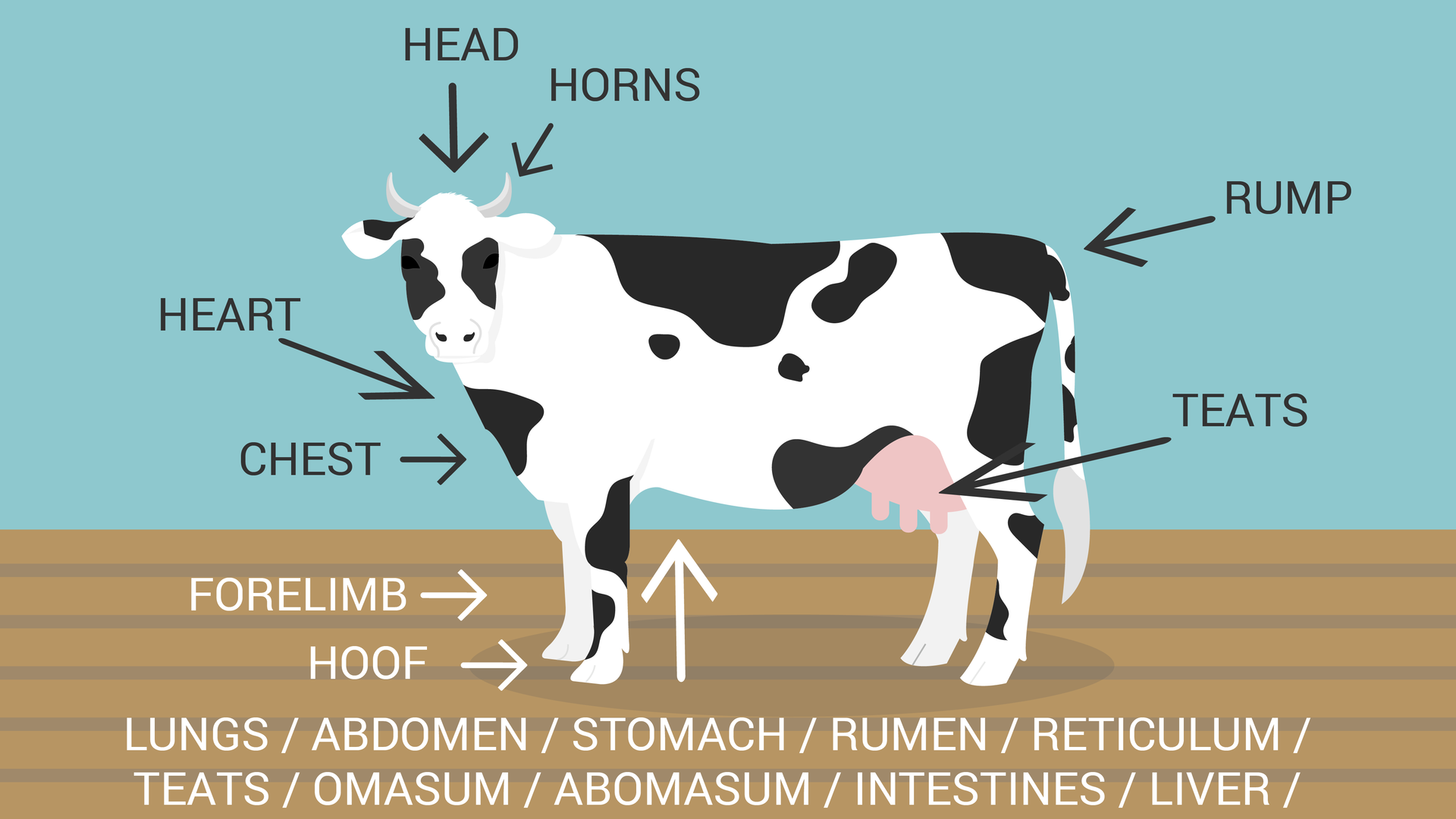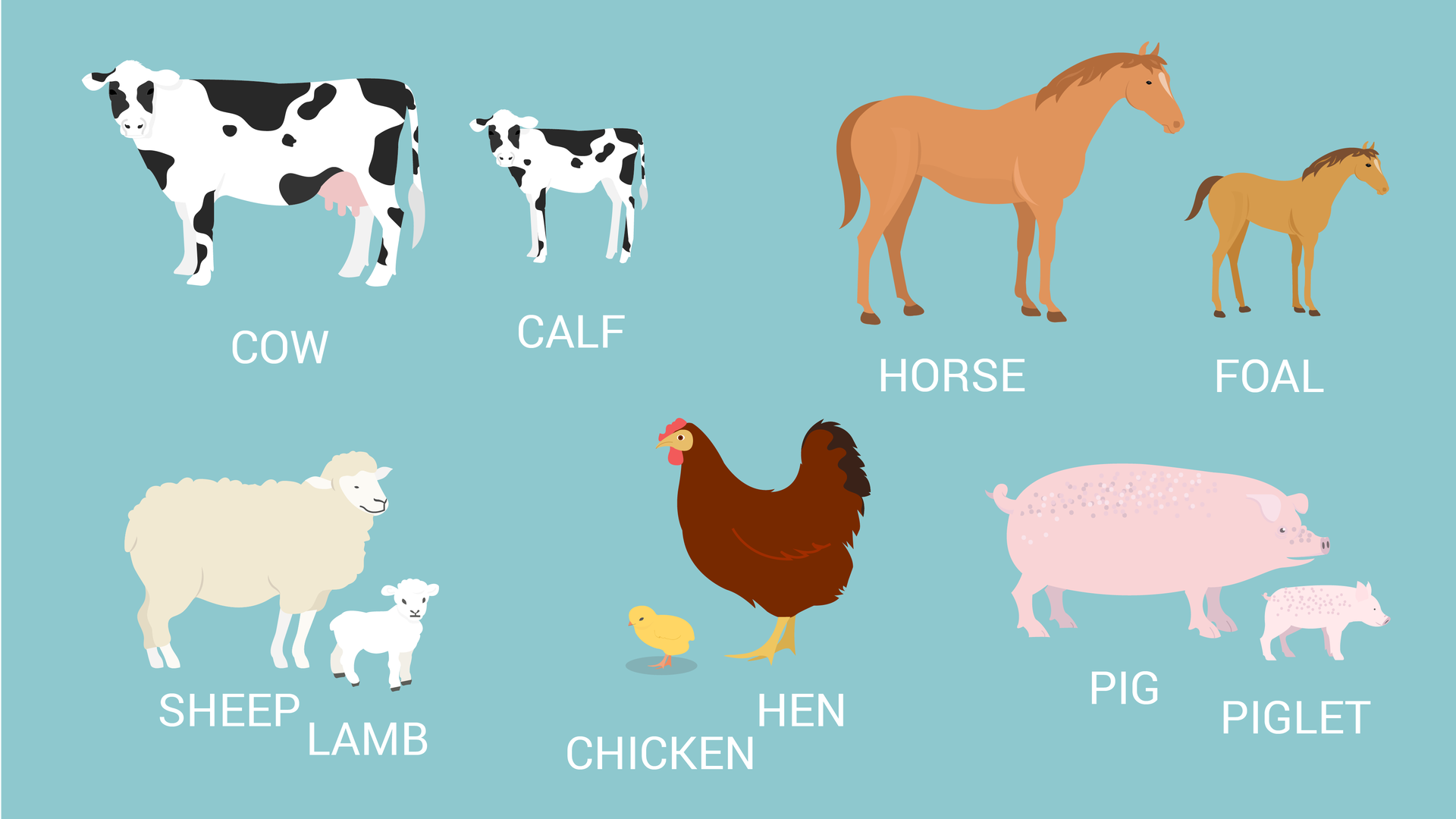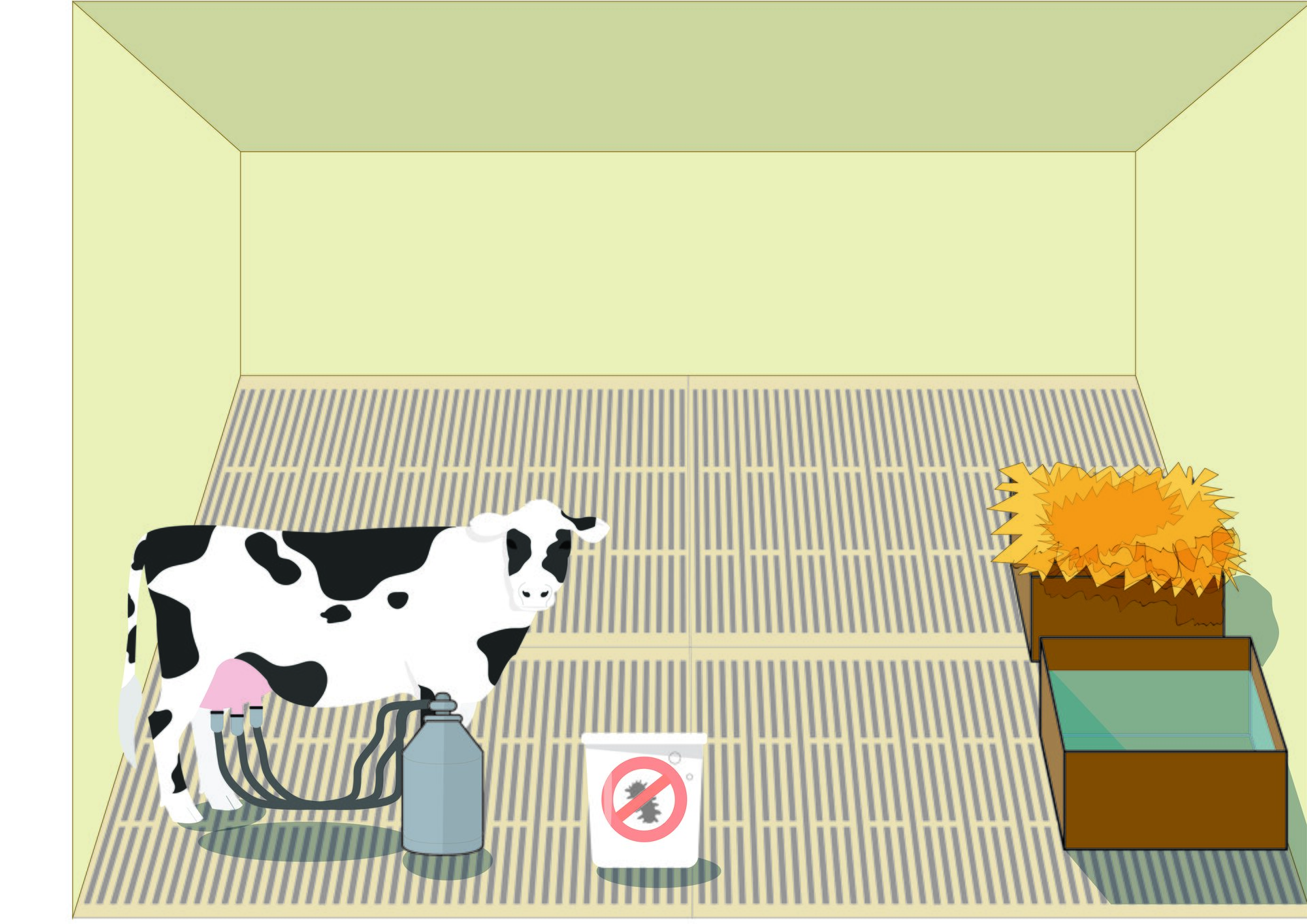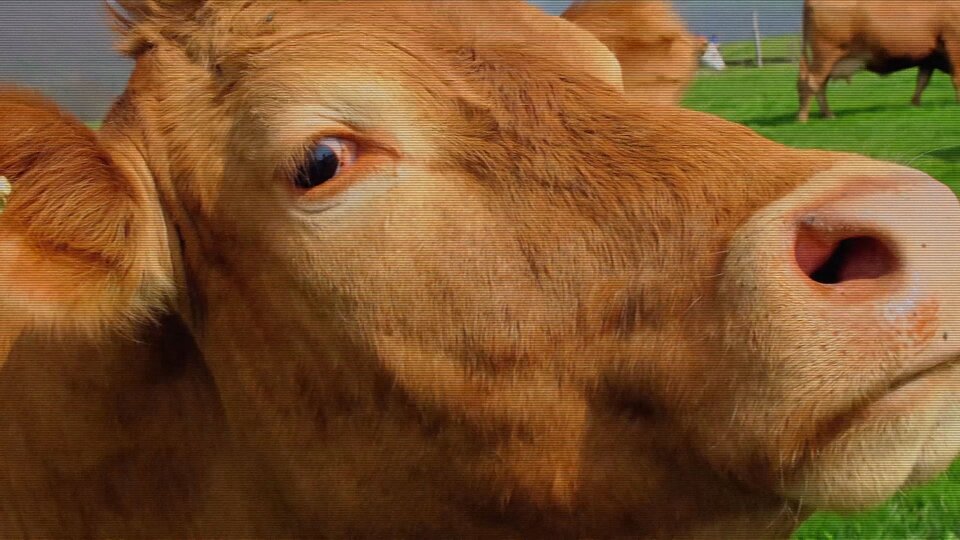Running livestock production
Zootechnician’s visit
1. Film in the standard version.
2. Film with subtitles
3. Film with subtitles and pauses. Listen and repeat after the speaker.
4. Film with subtitles and narration.
After watching the film, complete the sentences with correct prepositions. Use the word bank. Po obejrzeniu filmu, uzupełnij zdania odpowiednimi przyimkami. Skorzystaj z banku słów.
for, on, of, by, as, with, in, to
Are there any problems ............ animal production?
No, my cattle are healthy and ............ good condition.
First ............ all, I have repaired the barn.
So far I had been keeping my cattle in a deep litter husbandry ............ manure.
This is important ............ the cows’ health.
Previously, we kept cows in a tethered system with chains ............ the manger.
All animals have constant access ............ water.
I also provide green feed i.e. clover and lucerne ............ a juicy forage
Livestock species and products obtained thereof

Film dostępny na portalu epodreczniki.pl
moduł 3.2, Cattle of dairy breeds are maintained to produce milk, later used to produce cheese and butter. Cattle of the meat type, i.e. beef cattle, are maintained for meat. Pigs are kept for meat, lard and fatback. Saddle horses are used for recreational, sports and rehabilitation purposes. Draft horses are used for agricultural, recreational and sport purposes. Horses are also used for meat. Sheep of the wool type are kept for wool. Dairy sheep give milk. We use it to produce cheese. Sheep of the meat type are kept for meat. Laying hens rearing aims at obtaining eggs. Different types of poultry are used for meat production: hens, broilers, ducks, geese and turkeys. Breeding animals aims at keeping the flock of each species and produce calves, piglets, foals, lambs and chickens for sale.
Complete the sentences choosing the correct answer. Uzupełnij zdania wybierając prawidłową odpowiedź.
a) draft horses, c) goats, b) bulls, c) broilers, a) foals, b) hens, b) sheep, b) pedigree breeding, b) calves, b) calves, c) ducks, c) pigs, c) turkeys, a) castration, b) piglets, a) cows, c) lamb, a) chicks, a) laying hens, c) sows, c) suckling pigs, b) litter, a) geese, a) goats
1. ………….. are kept for milk and meat. ........................................
2. ……………… are kept for meat. ........................................
3. ……………………………. rearing aims at obtaining eggs. ........................................
4. ……….. of the wool type are kept for wool. ........................................
5. …………… are used for agricultural, recreational ........................................
6. Breeding swine aims at …………… production. ........................................
7. Different types of poultry are used for meat production, e.g. ……………………………… ........................................
8. Young cattle are called …………. ........................................
Milking cows and milking activities
Pig rearing
Dialogue between farmers:
- Good morning.
- Hello how can I help you?
- I would like to buy some pigletspiglets.
- It's good because I just weaned one litter from the sow. Do you want gilts or boars?
- I would like to get a couple.
- If you buy two couples, the price will be lower.
- I do not need four pieces. I would like to fatten them for my own useown use. I intend to use some of the meat products for direct saledirect sale. If it pays off I will buy more piglets from you.
- We will soon select the best animals. Of course the boars are already castrated.
- At what age do you castrate them?
- In the third week of life. All piglets already have ear tags in accordance with the Animal Identification and Registration Act.
- So I no longer have to register them?
- You must report the purchase and mark them with a tattoo.
- I can see there are pigs of all ages in your piggery: sowssows, boarsboars, pigletspiglets, suckling pigssuckling pigs and porkersporkers.
- I mainly deal with the pedigree breeding of meat pig breeds and the sale of piglets. However, some of the offspring I leave for fattening on my own farm.
- Is it worth it?
- Recently the demand for pork has increased and the price is high. Yes, but each group of animals, in a different direction of production, requires different feed. Where do you get the feed from?
- Yes, I have my own crops but I buy feed concentrates suitable for each animal group.
- And the animals in your farm do not get sick?
- Very rarely, because I care about their health, they have adjusted microclimate in the room and continuous veterinary care.
- Are you not afraid of African swine feverAfrican swine fever?
- I try to prevent illness. I use disinfectant mats, protective clothing, keep the farm clean and restrict access of strangers to the piggery.
- Now I understand why your farm has such a good reputation.
Transfer of knowledge from science to animal farm
The hypertext is the University of Agriculture's cooperation offer for the farmers, within the framework of a project
Attention farmers! The University of Agriculture invites you to participate in the „Learning for Breeders” projectproject . The project is implemented under the Rural Development ProgrammeRural Development Programme, financed by European UnionEuropean Union funds. We offer adviceadvice on the production of various animal species: cattlecattle, pigspigs, sheepsheep, goatsgoats, horseshorses and poultrypoultry. We will perform laboratory testslaboratory tests of forage and feed concentratesfeed concentrates for freefor free and will evaluateevaluate their qualityquality and nutritional valuenutritional value. On this basis, we will develop an ideal feed dose for the specific direction of usedirection of use. We will advise you on how to optimizeoptimize the conditions on your farm to meet animal welfareanimal welfare regulations. CowshedsCowsheds, hen houseshen houses, stablesstables and piggeriespiggeries with modern, innovative facilities will be available for you. In our facilities, you can get acquainted with the use of bucketbucket and tubular milking machinestubular milking machines, as well as with herringbone parloursherringbone parlours and rotary milking parlourrotary milking parlour. We will organize a training in hygiene and care of livestockhygiene and care of livestock and running animal production in accordance with the principles of ergonomicsergonomics and health and safetyhealth and safety. The exhibition will also feature an exhibition of farm animalsexhibition of farm animals where you can present your best animals and animal products made on your own farm. Applications for participation in the project can be made at this website: www.am.wystawa.com
Please refer to the University of Agriculture's cooperation offer from the hypertext document 2 "Transfer of knowledge from science to animal farm." Complete the sentences with the chosen words. Zapoznaj się z ofertą współpracy Uniwersytetu Rolniczego z dokumentu hipertekstowego nr 2 „Transfer wiedzy z nauki do farmy zwierząt”. Uzupełnij zdania wyrazami do wyboru.
b) project, a) rearing, c) meat use, a) milking machine, a) breeding, b) nutrition, b) laying use, c) fattening, a) cowshed, c) advice, a) financed, a) fields, b) opinion, c) a barn, c) identification, b) shops, c) used, b) hygienic, a) milking, b) feeding dose, c) pig farm, a) forage, b) exhibition, c) co-operation
1. University of Agriculture invites you to participate in a ...... ....................................
2. The project is ............... from European Union funds. ....................................
3. We offer the production of different animal species …………… ....................................
4. We carry out free laboratory tests of the ............. ....................................
5. We will compile the ideal ..................... ....................................
6. …………… will be available for you. ....................................
7. In our facilities you can read about the use of a/an ...... ....................................
8. The ...... of breeding animals will also be a part of the project. ....................................
Organic animal products
The dialogue between two women - a saleswoman (S) and a customer (C) in a grocery store. The dialogue relates to poultry products, including the organic ones.
S: Good morning. How can I help you?
E: Good morning. Can I have eggs, please?
S: I recommend the organic eggs.
E: I can see they are quite expensive. The ones next to them are much cheaper. What is the difference?
S: Those cheaper ones are from hens kept in an intensive cage systemintensive cage system that does not always meet the requirements of animal welfare. These hens are fed with mixed feed concentratesmixed feed concentrates that may contain antibioticsantibiotics.
E: And what are these organic ones?
S: Organic eggs come from certified farmscertified farms, where chickens are fed with their own fodder and are kept extensivelyextensively in the hen house. No antibiotics or GMO productsGMO products are added to feed.
E: But they are too expensive for me. S:In that case, I recommend barn reared or free range eggs. They are both nutritious and cheap. How do you distinguish them? After all, they all look the same!
S: Please note that each egg is markedegg is marked. Zero means eggs from organic farming, one means free rangefree range, two - barn rearingbarn rearing, and three - cages.
E: In that case, I will take the barn eggs.
S: Here you are. You could also visit the stall with poultry meatpoultry meat, where I recommend carcassescarcasses, thighsthighs, drumsticksdrumsticks, filletsfillets, offaloffal, wingswings and backsbacks.
E: I will gladly visit it.
Read the dialogue between a saleswoman and a customer in the grocery store in the hypertext document No. 3 "Organic animal products". Decide whether the sentences put under the dialogue are true or false. Zapoznaj się z dialogiem ekspedientki i klientki w sklepie spożywczym z dokumentu hipertekstowego nr 3 „Ekologiczne produkty zwierzęce”. Ustosunkuj się do zdań umieszczonych pod dialogiem, podejmij decyzję, czy to prawda czy fałsz.
| Prawda | Fałsz | |
| The saleswoman recommended organic eggs. | □ | □ |
| Organic eggs are cheap. | □ | □ |
| Eggs from hens kept in an intensive cage system are more expensive. | □ | □ |
| Organic eggs come from certified farms. | □ | □ |
| On organic farms, hens are fed with their own feed. | □ | □ |
| Antibiotics and GMO products are added to feeds in the extensive hens feeding. | □ | □ |
| Eggs marked with Zero are from barn rearing. | □ | □ |
| The saleswoman at the poultry meat stall recommended drumsticks. | □ | □ |
Anatomical structure of cows with assessment of the type
Match Polish terms with their translations. Połącz polskie terminy z ich tłumaczeniami.
abomasum, dehorning, rump, head, teats, muscled limbs, hooves, hair, horns, udder
| głowa | |
| rogi | |
| dekornizacja | |
| umięśnione kończyny | |
| racice | |
| trawieniec | |
| wymię | |
| strzyki | |
| zad | |
| sierść |
Pictures
Look at the cow’s body parts. Do you know the names for other organs and body parts?

Look at the animal species and learn their names and the names of their youngs:

Describe what you can see in the photograph

Game

Zasób interaktywny dostępny pod adresem https://zpe.gov.pl/a/D1GGA2wzi
Dictionary
doradztwo
afrykański pomór świń
grupa wiekowa
zwierzę
ustawa o systemie identyfikacji i rejestracji zwierząt
system utrzymania zwierząt
produkt pochodzenia zwierzęcego
produkcja zwierzęca
dobrostan zwierząt
antybakteryjny
antybiotyk
korpus
stodoła
chów ściółkowy
bydło opasowe
knurek, knur
boks
brojler
dojarka konwiowa
chów klatkowy
tusza
wytrzebić
bydło
gospodarstwa certyfikowane
łańcuch
obora
krowa mleczna
użytkowanie mleczne
głęboka obora
popyt
sprzedaż bezpośrednia
kierunek produkcji
kierunek użytkowania
mata dezynfekująca
dojarka dwukonwiowa
użytkowanie zaprzęgowe
poidło
podudzie
kaczka
kolczyk
jajo
jajo oznakowane
ergonomia
Unia Europejska
ocenić jakość
wystawa zwierząt hodowlanych
sposób ekstensywny
pasza treściwa
filet
pasze objętościowe
bezpłatnie
chów wolnowybiegowy
system wolnostanowiskowy
produkt GMO
koza
dobra kondycja
gęś
zielonka
grupa zwierząt
siano
BHP
kura
kurnik
stado
hala udojowa typu rybia ość
racica
koń
higiena
higiena i pielęgnacja
higiena i dezynfekcja dojarki
przemysłowa mieszanka
intensywny system klatkowy
badanie laboratoryjne
użytkowanie nieśne kur
miot
kiszonka z kukurydzy
żłób
ubój ręczny, dojenie ręczne
obornik
mięsna rasa świń
użytkowanie mięsne
ubój mechaniczny, dojenie mechaniczne
mikroklimat
wydajność mleczna, udój
system uboju
mieszanka pasz treściwych
modernizacja
system bezściołowy
żywienie
wartość pokarmowa
podroby
zoptymalizować
chów ekologiczny
własny użytek
hodowla zarodowa
świnia
chlewnia
prosię
wieprzowina
tucznik
drób
mięso drobiowe
projekt
odzież ochronna
chów
rejestrować
hala udojowa typu karuzela
Program Rozwoju Obszarów Wiejskich
użytkowanie wierzchowe
owce
silos
ruszt
locha
stajnia
warchlak
trzoda chlewna
kąpiel strzyków po udoju
strzyk
technologia
system uwięziowy
udo
dojarka rurowa
rurowy system udojowy
indyk
typu
wymię
sztuki
opieka weterynaryjna
odsadzić
skrzydło
użytkowanie wełniste





